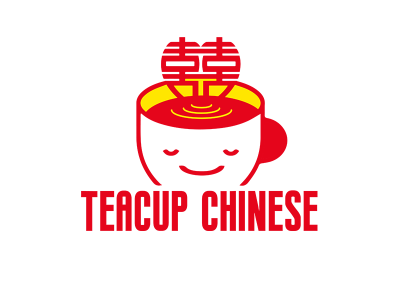Chinese vs. Mandarin: Key Differences Explained
While Mandarin Chinese is the official language of China, it is not the only language spoken in China. Almost all Chinese-born citizens can speak Mandarin, but China is home to many regional and Chinese languages such as Cantonese, Shanghainese, and Hokkien.
This leads to confusion about Chinese and Mandarin are the same language. To clarify, let’s break down the key differences between them.
What Does Mandarin Mean?
- Mandarin Chinese officially known as 普通话 (pǔ tōng huà) translates to the common tongue. It is the standard language of China and the most spoken Chinese.
- Another used term is 中文 (zhōng wén) which often refers to Mandarin Chinese. The character 中 (zhōng) means “middle” and 文 (wén) means “language”. The term 中文 (zhōng wén) originates from China’s historical as the Middle Kingdom, meaning it can be translated as “the language of the Middle Kingdom” which basically means “Chinese language”.
From this we can see that Mandarin as Chinese is not incorrect as it is the standard Chinese language used across China. However, China is a multilingual country home to many other Chinese languages and regional spoken by millions.
Let’s take a closer look at the different languages spoken in China.

Mandarin vs Cantonese Key Differences
Mandarin Chinese is the official language of China and the most spoken language in the world with over a billion speakers It is the language used in education government and media across mainland China.
Cantonese on the other hand is spoken in Guangdong province, Hong Kong, and Macau It has a rich history a complex tonal system and is used in pop culture films and media.
While both are Chinese languages, they are mutually unintelligible, meaning Mandarin and Cantonese speakers cannot easily understand each other without prior exposure.
Diffrences between Cantonese and Mandarin
Mandarin and Cantonese are both Chinese languages, but they have key differences in tones and writing systems.
- Tonal Differences:
Mandarin has four basic tones a neutral tone and a fifth neutral tone.
Cantonese is commonly spoken with six tones, but traditionally it contains nine tones. - Writing System:
Mandarin uses both simplified and traditional Chinese characters, while Cantonese favors traditional Chinese characters. Mandarin and Cantonese speakers cannot understand one another when speaking. (Most people born in Guangdong province speak both Mandarin and Cantonese). However, many people in Guangdong province speak both Mandarin and Cantonese due to education and exposure.
Similarities between Cantonese and Mandarin
Despite their pronunciation differences, Mandarin and Cantonese share some key similarities.
- Written Language:
Even though Mandarin and Cantonese are spoken differently, they are not spoken in the same way, most words are written with the same characters. Mandarin speakers can read Cantonese to some extent. - Sentence Structure:
Both languages follow the same basic sentence structure, Mandarin and Cantonese follow the same basic pattern when constructing sentences, but the grammar rules differ, variations in word order, particles, and verb usage.
The Beijing dialect, ometimes called “Beijinghua” (北京话), is the local dialect of Beijing. It serves as the foundation of Standard Mandarin, how Mandarin Chinese is spoken across China. Due to its many of Beijinghua, such as pronunciation and tone, are reflected in Standard Mandarin, making it one of the most important dialects in China.
Quirks of the Beijing Dialect
- The Beijing dialect intonation in the Beijing dialect can be more exaggerated and expressive compared to other Mandarin dialects. This can make the speech sound more vibrant and dynamic.
- A distinct feature of the Beijing accent is the prominent use of “Erhuayin” (儿化音) where an elongated “er” (儿) sound is appended to numerous words and expressions.
The China’s Linguistic Landscape: A Reflection of Cultural Diversity is a testament to its historical richness and cultural. From use of Mandarin to the tones of Cantonese, the syllables of Shanghainese, and the numerous other dialects and languages spoken across its regions, each contributes to the nations vibrant.
FAQ
Q1: Is Mandarin the same as Chinese?
No. Mandarin is a type of Chinese but there are many other Chinese languages and dialects such as Cantonese Shanghainese.
Q2: Do all Chinese people speak Mandarin?
While Mandarin is the official language of China not all Chinese people speak it as their first language Many regions have their own dialects like Cantonese in Hong Kong and Guangdong.
Q3: Can Mandarin and Cantonese speakers understand each other?
No, Mandarin and Cantonese are mutually unintelligible when spoken. However, their written share many similarities making written communication somewhat easier.
Q4: Why does Mandarin use simplified characters while Cantonese uses traditional characters?
Simplified characters were introduced in the 1950s to increase literacy rates in Mainland China. However, Hong Kong, Macau, and Taiwan continue to use traditional characters which are more complex.
Q5: What are some other Chinese languages besides Mandarin and Cantonese?
China has many regional languages, including Shanghainese (Wu Chinese) Hokkien (Min Nan) Hakka, and minority languages like Tibetan and Uyghur.
Q6: Is the Beijing dialect the same as Mandarin?
The Beijing dialect is a major influence on Standard Mandarin, but it has some distinct pronunciation features, such as the “er” (儿) sound, which is more prominent in Beijing speech.
Q7: Which language should I learn, Mandarin or Cantonese?
If you want to communicate with the most people in China and globally, Mandarin is the best choice. However, if you plan to live in Hong Kong or Guangdong, learning Cantonese could be useful.
If you enjoyed this article, “The Difference Between Chinese and Mandarin” you may also enjoy learning about the difference between “3 Chinese Radicals About The Body“!
BEIJING
HANGZHOU
SUZHOU
CHENGDU
Learn Chinese in Beijing
Study Chinese in Beijing, China’s capital and its political, cultural & educational heart
Learn Chinese in Hangzhou
Study Chinese in Hangzhou, the capital of Zhejiang province, nearby Xihu lake
Learn Chinese in Suzhou
Learn Mandarin in Suzhou, known as the Venice of the East for its water canals and gardens
Learn Chinese in Chengdu
Study Chinese in Chengdu, the capital of Sichuan province and home to pandas










